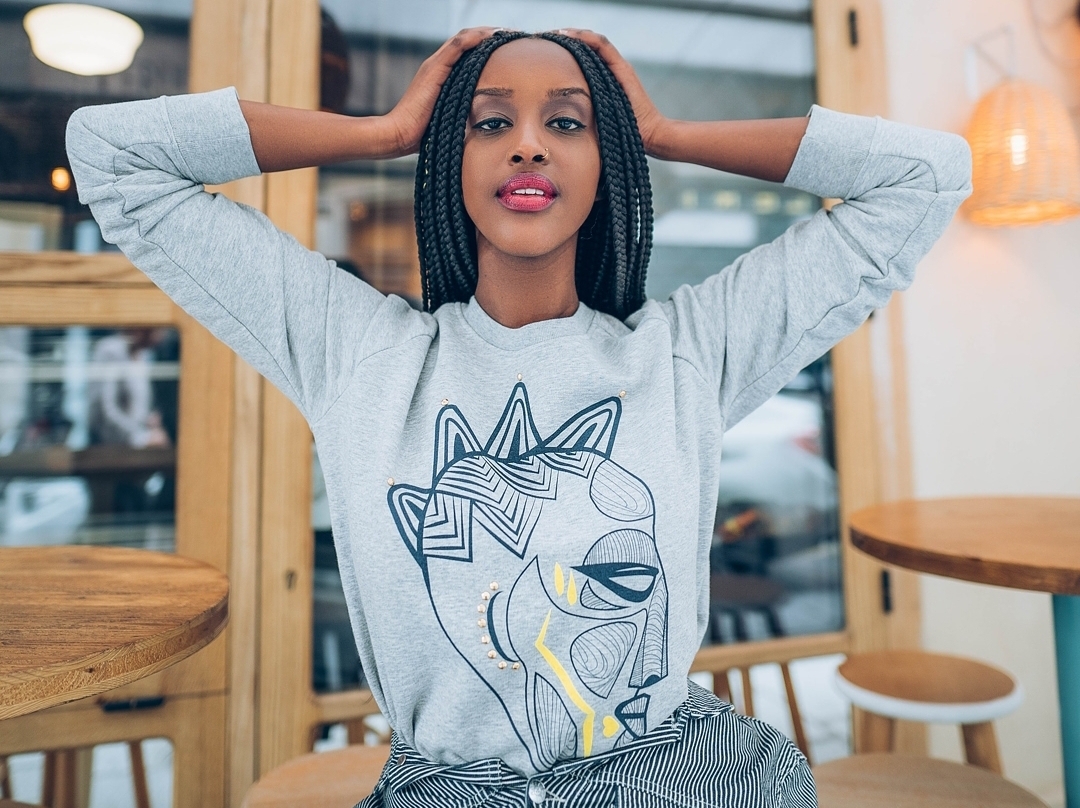How Branded Clothing Can Boost Confidence Through Fabric and Feel
How Branded Clothing Can Boost Confidence Through Fabric and Feel
Blog Article
Comprehending Clothes: The Value of Material Options in Your Wardrobe
The option of material in clothes plays an essential role in both appearances and functionality. Various materials provide differing levels of comfort, sturdiness, and breathability, directly influencing the user's experience. Comprehending these subtleties can enhance one's wardrobe significantly. Numerous forget how these selections can impact not simply individual style, but likewise sustainability. What textile choices could redefine your closet and straighten it with both style and responsibility?
The Duty of Fabric in vogue and Functionality

Usual Textile Kinds and Their Features
When selecting clothes, comprehending the characteristics of typical fabric types is important for making notified options. Cotton, a widely-used natural fiber, is known for its breathability, softness, and flexibility, making it ideal for sportswear and day-to-day garments. Bed linen, another all-natural alternative, boasts exceptional moisture-wicking homes and an unique texture, suitable for warm climates.Wool, typically favored for its heat and longevity, varies in excellence; merino wool is soft against the skin, while coarser kinds are utilized for outerwear. Artificial textiles like polyester and nylon use longevity and resistance to wrinkles, making them preferred for activewear and travel garments. Blends, which incorporate synthetic and all-natural fibers, can boost capability while preserving comfort. By acknowledging these fabric qualities, individuals can pick clothing that straightens with their way of living and visual preferences.
Breathability and Comfort: Picking the Right Fabrics for Various Environments
Picking the best fabrics for different climates can significantly improve convenience and overall wearability. Breathable materials are essential in hot climates, as they enable air circulation and wetness dissipation. Fabrics such as cotton, bed linen, and moisture-wicking synthetics successfully draw sweat far from the body, maintaining the wearer cool and completely dry. Conversely, in chillier environments, thicker fabrics like wool or fleece give insulation while preserving breathability, ensuring heat without overheating.Additionally, the choice of material weight plays a crucial function; lightweight materials are better for summer, whereas heavier choices are suited for winter season wear. Comprehending the one-of-a-kind homes of each material makes it possible for individuals to clothe properly for differing climate condition. Ultimately, selecting breathable and comfortable materials tailored to details environments can considerably enhance everyday comfort and improve the total experience of putting on clothes.
Durability and Treatment: Exactly How Fabric Influences Long Life of Your Wardrobe
Picking the ideal materials can considerably influence the longevity and care requirements of a closet. Fabrics such as cotton and polyester are known for their resilience and ease of upkeep, making them ideal for daily wear. In comparison, fragile products like silk and shoelace require more careful handling and specialized cleansing approaches, which can boost the time and initiative required for care. Branded Clothing.Durability is additionally affected by the material's weave and coating; securely woven materials have a tendency to resist deterioration much better than loosely woven alternatives. Furthermore, synthetic blends commonly supply boosted resilience, incorporating the ideal qualities of several fibers.Understanding the treatment guidelines for every textile is crucial, as inappropriate washing or drying can lead to early wear. Ultimately, selecting long lasting materials can cause a longer-lasting wardrobe, minimizing the regularity of replacements and contributing to a much more sustainable style selection
The Influence of Textile on Fit and Shape

Sustainable Textile Choices: Making Eco-Friendly Decisions
The impact of textile prolongs beyond fit and silhouette to include environmental variables, motivating an expanding passion in lasting textile choices. Environment-friendly fabrics, such as organic cotton, hemp, and Tencel, are getting grip amongst customers that focus on sustainability in their closets. These materials are often produced with less chemicals and water, reducing their environmental footprint.Additionally, recycled textiles, made from post-consumer waste, provide an ingenious solution to the textile sector's pollution issue. Brands progressively welcome transparency in their sourcing approaches, allowing customers to make informed decisions concerning their purchases.Choosing sustainable materials not just supports honest methods however additionally motivates the fashion business to take on even more responsible manufacturing methods. As recognition of environmental problems increases, individuals are urged to review the lasting effect of their fabric selections, cultivating a motion towards an extra environmentally mindful and sustainable approach to fashion.
Elevating Style: Just How Textile Can Transform an Attire
While many may concentrate on color and cut when selecting an outfit, the selection of textile plays a necessary function in boosting design and enhancing general look. Various products communicate distinct moods and messages; for instance, silk emanates high-end and refinement, while denim offers an informal, kicked back ambiance. The texture and drape of a textile can considerably modify the shape, with organized textiles giving a polished appearance and softer ones producing a much more fluid, relaxed aesthetic.Moreover, the weight of the fabric affects wearability across periods. Light-weight materials like linen and cotton are suitable for summer season, while heavier products such as wool and velvet supply heat and elegance in colder months. Recognizing textile residential properties, such as breathability and stretch, likewise equips individuals to make enlightened options that enhance comfort without jeopardizing design. Eventually, the ideal material can transform an attire from ordinary to remarkable, making it an essential consideration in any type of wardrobe.
Regularly Asked Inquiries
Exactly how Do I Determine the Textile Content of My Garments?
To identify fabric content, one can check out treatment labels, conduct melt tests for fiber recognition, or consult material swatches. These methods help separate materials, ensuring informed options for clothes treatment and upkeep in everyday wear.
Can Textile Choice Affect My State Of Mind or Confidence?
Fabric selection can greatly influence an individual's state of mind and confidence. Branded Clothing. Particular products might evoke feelings of convenience or beauty, while others can really feel unflattering or limiting, eventually influencing self-perception and psychological wellness throughout the day
What Fabrics Are Best for Delicate Skin?
For people with sensitive skin, natural materials like bamboo, bed linen, and cotton are often recommended. These materials are breathable, hypoallergenic, and less most likely to create irritability, making them appropriate options for convenience and skin health.
How Do I Appropriately Wash and Take Care Of Various Fabrics?
To effectively wash and care for different textiles, one have to take into consideration each product's particular demands, consisting of temperature setups, detergents, and drying approaches, ensuring long life and preserving the fabric's original qualities for excellent usage.
Are There Particular Fabrics for Athletic or Performance Put On?
Sports or performance wear frequently utilizes materials such as spandex, polyester, and nylon. These materials are designed for moisture-wicking, breathability, and adaptability, boosting movement and convenience during exercises while offering durability and assistance. Conversely, in cooler environments, thicker materials like wool or fleece give insulation while maintaining breathability, making sure heat without overheating.Additionally, the choice of fabric weight plays an essential duty; lightweight fabrics are more effective for summer, whereas much heavier options are matched for wintertime wear. In comparison, fragile materials like silk and shoelace call for even more careful handling check and specialized cleansing techniques, which can enhance the time and effort needed for care.Durability is likewise influenced by the material's weave and finish; tightly woven materials have a tendency to stand up to wear and tear much better than loosely woven alternatives. In comparison, stiff fabrics can limit activity however offer a traditional, polished look.Moreover, the density and visit this website structure of the textile can influence the visual understanding of body shape. The effect of material prolongs beyond fit and shape to include ecological factors, prompting a growing rate of interest in lasting textile choices. The texture and drape of a textile can significantly change the shape, with structured fabrics supplying a polished appearance and softer ones producing a much more fluid, unwinded aesthetic.Moreover, the weight of the material affects wearability throughout seasons.
Report this page